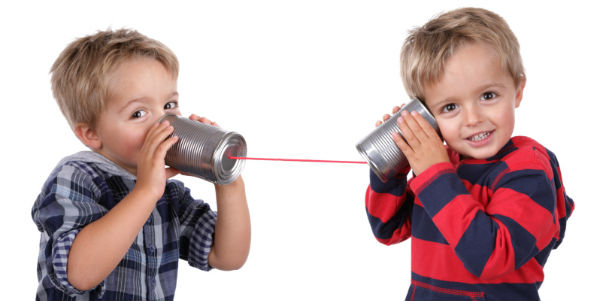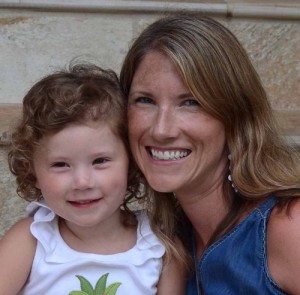
Therapy Tips
Is Communication Just About Speech?
For many children, a lack of words or words that are developing slower that his peers, may be one of the first "clues" that your child may have special needs. Having a child with delayed speech skills can be stressful, saddening, and frustrating. As parents, those first words are highly anticipated and it can be absolutely heartbreaking when your child is struggling. Many times, though, we can get caught up in the "words" and miss opportunities for communication. It is so very important, as a parent with a child who is struggling with the development of speech and language skills, to understand the meaning and value of communication. In my post What is the Difference Between Speech & Language I explain how speech refers to the physical motor ability to talk and produce speech sounds while language is a symbolic, rule governed system used to convey a message. But communication is one step further. Often times, our little ones ARE communicating to us, but in ways you may not be catching because you are not looking for it. Once you know what to look for, you can properly respond to your child's communication and expand it!What is Communication?
Communication is the process of conveying a message or meaning to establish a shared understanding to others. You don’t need speech or a shared language to communicate. How? Let’s say you decide to go on a trip to Rome but you don’t speak one word of Italian. You get off your plane, and you want to pick up your rental car, but you can’t read any of the signs. You find a local, but he doesn’t speak English. What can you do to communicate to this person that you want to know where the rental cars are? There are a couple ways. One, you could use your hands and gestures as if you are driving a car while using facial expressions and body language (furrowed brows, raised shoulders) to indicate you are asking a question. Another way, could be to draw a picture of a car. This could help the local Roman help you find your way to the rental cars. So in my example above, you are communicating without using speech or a shared language (i.e. English or Italian). You are using gestures, facial expressions, body language or even pictures to communicate!How is My Child Communicating?
If you have a child who is struggling with speech and language development, one of the first steps is to determine what type of communicator is your child. I go over the types of communicators as defined by The Hanen Centre Here. Remember that communicating does not have to involve speech. Here are some ways your child may be communicating to you without using speech:- Spending a long time playing/observing something. He is showing you that he is interesting in this. Even if he is not yet communicating this with intent…his actions can tell you something about how he feels and what he likes.
- Smiling: He is communicating that he enjoys something
- Other Facial Expressions: Happiness, sadness, excitement, fear, anger and other emotions can be communicated thorough facial expressions.
- Reaching for something: He is communicating that he wants something
- Turning away from something: He is communicating that he does not want/like something
- Other body movements: One great example of this that you see on video if you ever do the “It Takes Two to Talk” parent workshop, is a mother pushing her young child on the swing. She keeps waiting for him to say or sign “more” but she misses the fact that he is KICKING his foot at the perfect time to be “requesting” more swinging. This is why I am asking you to listen with your eyes and not your ears right now. REALLY watch your child’s body movements as he may be trying to communicate to you!
- Looking at you/Eye contact: He is communicating something to you, but the context (what is happening all around you both) will help you determine what he is communicating
- Looking at something, looking at you, and then looking back at the item: This is him communicating that he has interest in something and he wants to show you. This is referred to as Joint Attention and is a VERY important preverbal skill.
- Gestures: Any gestures! Hands up to communicate "up", motioning to the mouth to indicate hunger, etc. Every child uses gestures in different ways.
- Pointing: Pointing to objects he wants to share with you or objects he wants.
- Squealing: With happiness OR with disdain/dislike. Whether he is communicating with intent or not…these actions will tell you more about his interests and what he likes/doesn’t like.
- Laughing He probably happy and is enjoying the activity if he is laughing!
- Inflections in his babbling Listen carefully to those babbles. It is likely that he may be adding some inflection in there that will tell you more about how he is feeling. You often can tell if a child is happy, sad, frustrated, confused, or being inquisitive by the infection of his babbling.
- Grunting: This is pretty common in the little ones who are pre-verbal. Grunting and other sounds are often used to get your attention and communicate a variety of emotions, feelings, wants and needs, depending on the context.



